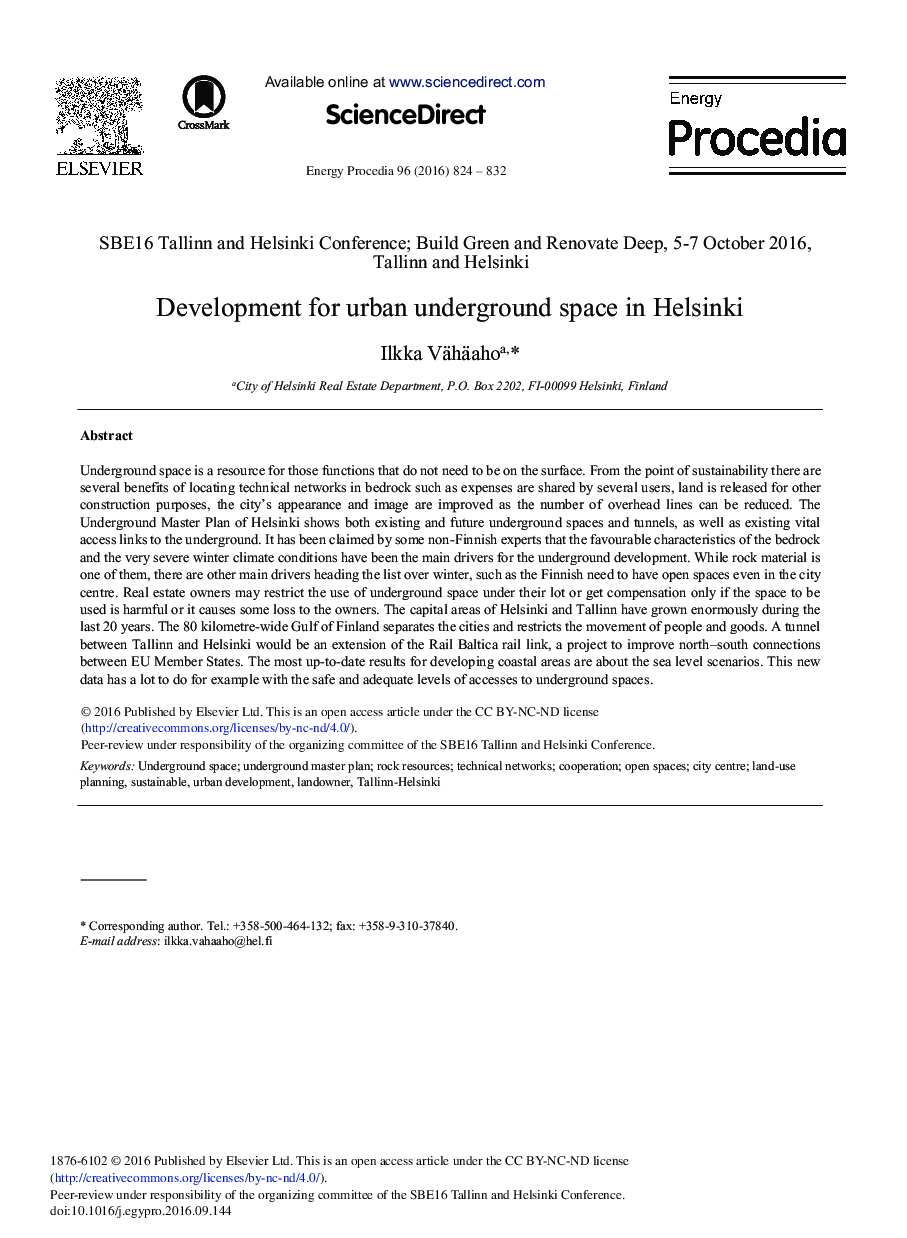| Article ID | Journal | Published Year | Pages | File Type |
|---|---|---|---|---|
| 5446776 | Energy Procedia | 2016 | 9 Pages |
Abstract
Underground space is a resource for those functions that do not need to be on the surface. From the point of sustainability there are several benefits of locating technical networks in bedrock such as expenses are shared by several users, land is released for other construction purposes, the city's appearance and image are improved as the number of overhead lines can be reduced. The Underground Master Plan of Helsinki shows both existing and future underground spaces and tunnels, as well as existing vital access links to the underground. It has been claimed by some non-Finnish experts that the favourable characteristics of the bedrock and the very severe winter climate conditions have been the main drivers for the underground development. While rock material is one of them, there are other main drivers heading the list over winter, such as the Finnish need to have open spaces even in the city centre. Real estate owners may restrict the use of underground space under their lot or get compensation only if the space to be used is harmful or it causes some loss to the owners. The capital areas of Helsinki and Tallinn have grown enormously during the last 20 years. The 80 kilometre-wide Gulf of Finland separates the cities and restricts the movement of people and goods. A tunnel between Tallinn and Helsinki would be an extension of the Rail Baltica rail link, a project to improve north-south connections between EU Member States. The most up-to-date results for developing coastal areas are about the sea level scenarios. This new data has a lot to do for example with the safe and adequate levels of accesses to underground spaces.
Keywords
Related Topics
Physical Sciences and Engineering
Energy
Energy (General)
Authors
Ilkka Vähäaho,
